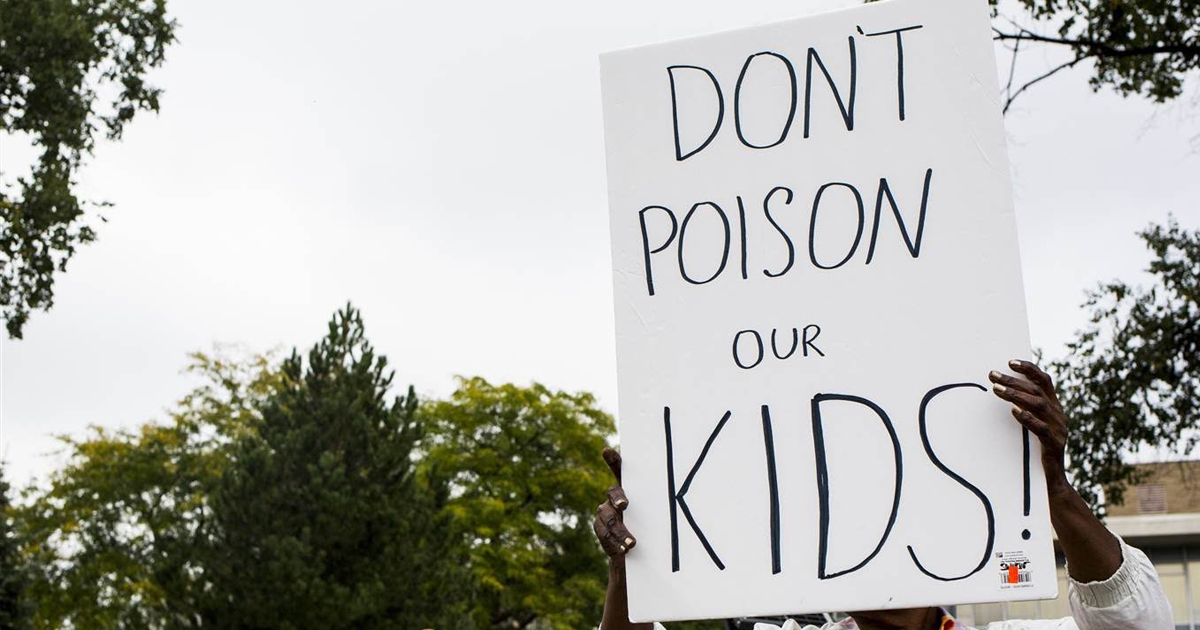A seven-member federal jury begins their first full day of deliberations this morning in Columbus, Ohio. The case is Carla Bartlett v. DuPont; the first of 3500 cases filed in federal courts in Ohio and West Virginia, alleging that a chemical, C-8, used by DuPont to manufacture Teflon at its Washington Works plant, caused serious injuries to those exposed to trace amounts of the chemical in their drinking water.
In the lawsuit, Mrs. Bartlett alleges that she developed kidney cancer after drinking contaminated water from the Tuppers Plains-Chester Water District for many years. DuPont has admitted that it dumped hundreds of thousands of pounds of C-8 in the surface waters and air surrounding Washington Works, resulting in the widespread contamination of the soil and aquifers that supply drinking water to at least six water districts in Ohio and West Virginia, including Tuppers Plains.
DuPont also admitted that the C-8 in Mrs. Bartlett’s water supply came from the Washington Works Plant, and that drinking water with at least .05 parts per billion of C-8 for one year or more could cause kidney cancer. However, getting these admissions from DuPont has taken nearly two decades of intense litigation, and a hard fought trial process. DuPont’s liability for Mrs. Bartlett’s injuries will soon be decided, and the fate of thousands of other lawsuits against DuPont hangs in the balance.
The jury heard three weeks of witness testimony and was shown, for the first time, internal DuPont documents showing that DuPont was concerned with the toxicity of C-8 since, at least, the early 1960’s, and that some in the company were concerned with contamination of the aquifer in the 1970’s. Despite these concerns, the evidence shown to the jury proved that DuPont refrained from directly warning the communities surrounding the plant until after being sued by a local farmer, Wilbur Tennant, in 1999.
Mr. Tennant lost hundreds of cows after they consumed water from the Dry Run Creek, an Ohio River tributary into which DuPont allowed black foaming landfill leachate to leak into for years. Despite the cattle deaths and the lawsuit, DuPont still refrained from warning the public or completely sharing their internal information regarding the potential toxicity of C-8 with regulators, until the existence of the chemical at the Dry Run Landfill was uncovered by Tennant’s attorney, Robert Bilott.
Once discovered, Mr. Bilott began informing regulators of the existence of the chemical at the landfill and in other water supplies, and DuPont was forced to disclose information on C-8, much of which it had been sitting on for decades. Some of this information included DuPont’s knowledge that the C-8 is a “biopersistent” chemical that “bioaccumulates” in those exposed to it. That is, the chemical will persist in the environment for thousands of years before it degrades or dissolves, and due to this trait, when ingested, C-8 remains in the body for up to twenty years before being completely expelled.
In closing arguments yesterday, Carla Bartlett’s and DuPont lawyers faced off for the final time, in what some in the gallery called the “one of the best closing sequences” seen in this federal court. Attorney Michael Papantonio methodically presented a timeline of how DuPont possessed information about the dangers of C-8 and its contamination of the Ohio River Valley, but failed to sufficiently inform the public of this information.
By sitting on the information, including animal testing data showing that C-8 was a potential human carcinogen, DuPont acted with a “reckless disregard for the rights and safety of the community, including people like Mrs. Bartlett,” Papantonio argued. “DuPont could see the truck coming down the road, but didn’t tell anyone to get out the way.” Attorney Gary Douglas presented the damages portions of the summation to the jury, reiterating the testimony provided by Mrs. Bartlett’s treating doctors that described the surgery to treat her kidney cancer as a process in which she “was cut nearly in half” to remove the tumor. Mrs. Bartlett was brought to tears as Mr. Douglas described her continued fear of future bouts of cancer due to her exposure to C-8, and the fact that the chemical, still present in her blood, will be there for years to come.
DuPont’s lawyer, Mr. Damond Mace, reading from a script from which he rarely deviated, explained to the jury that DuPont acted reasonably in their handling of the chemical, particularly because the chemical was unregulated. Mr. Mace further reasoned that because the Ohio River had such a massive volume of water, the amounts of C-8 that DuPont disposed into it were too little for DuPont to know it would cause harm to the community.
Mr. Mace, seeking to avoid the imposition of punitive damages against his client, argued that DuPont couldn’t have acted with malice when dumping their waste in the river because it didn’t know that there was a great probability of harm from its conduct. Mr. Mace stated that despite decades of access to DuPont’s files and computers, the plaintiff’s attorneys had failed to show the jury even “one document” that shows DuPont placed profits over safety, or acted with a conscious disregard for the safety of the public.
In rebuttal, Mr. Papantonio stormed into the well, clearly angered by what he called “Mr. Mace’s dance around the facts”. Papantonio stated that, after seeing what DuPont has done to the people of the Ohio River Valley “I cannot describe the fury in my heart.” He further argued that “if a corporation like DuPont can get away with what they have done here” then he would be forced to believe the “cynic who says that our justice system is broken.”
Mr. Papantonio grabbed a document referred to “Plaintiff’s Exhibit 8195” and slammed it onto DuPont’s counsel table, saying, “you want a document, I’ll give you document”. The document, a 1997 “material safety data sheet,” intended to instruct DuPont employees on the safe handling, disposal and usage if C-8, showed that DuPont had conducted studies in the early 1980s and 1990s that indicated C-8 could cause cancer. It further showed that the recommended disposal of C-8 waste was through industrial incineration, a costly process and something DuPont chose not to do when dumping C-8 into the Ohio River for nearly six decades.
Earlier in the trial, a lawyer for Mrs. Bartlett questioned DuPont’s corporate representative and chief toxicologist, Dr. Robert Rickard, about the document, but, as Mr. Papantonio pointed out during his closing argument, Dr. Rickard, despite being confronted with the document, still refused to admit that DuPont had known after the studies that C-8 was a potential carcinogen for years before it ever warned the public. Mr. Papantonio also pointed out that when DuPont was provided independent information in 2012 that C-8 was found to have a probable link to six specific human diseases, including kidney cancer, DuPont still took no action to warn the communities that had been drinking contaminated water for decades.
If the jury finds for Mrs. Bartlett, they will be asked to determine if DuPont acted with “malice,” which Ohio law defines as “conscious disregard for the rights and safety of other persons that has a great probability of causing substantial harm.” A punitive damages award could reach into the billions due to the fact that DuPont’s conduct contaminated the drinking water of thousands of people.


